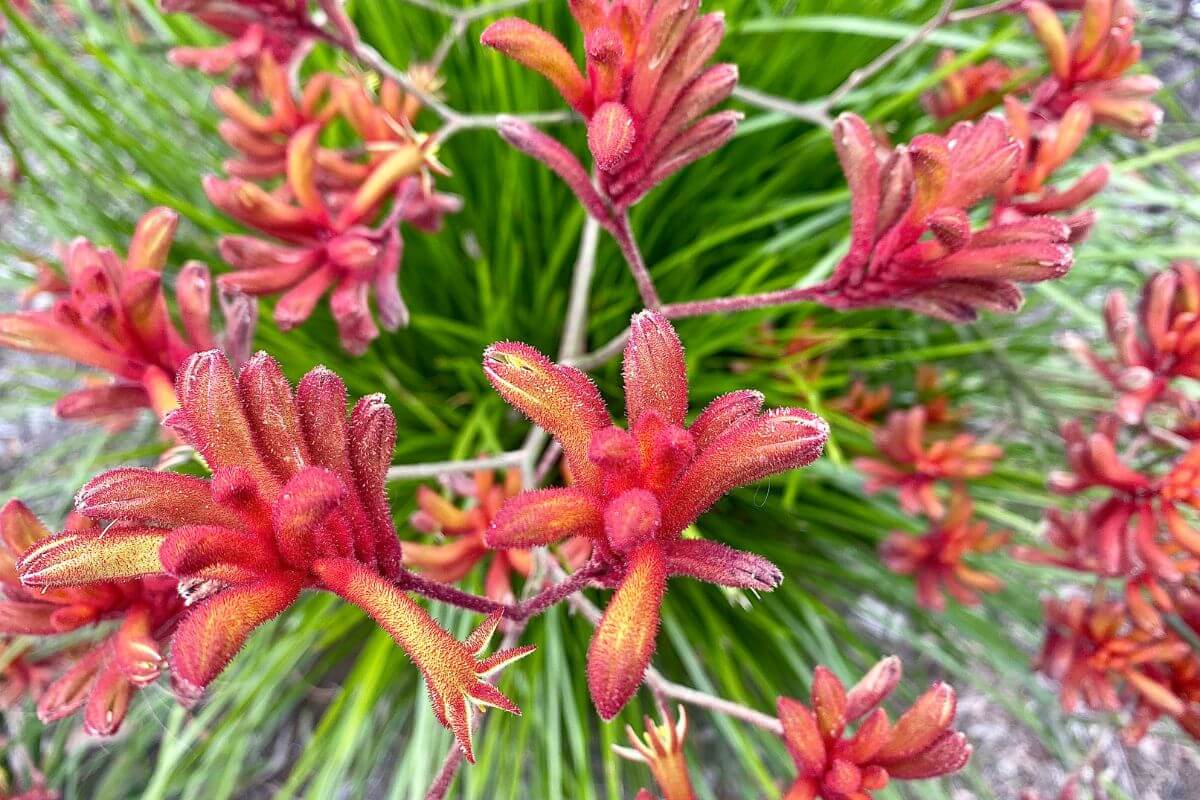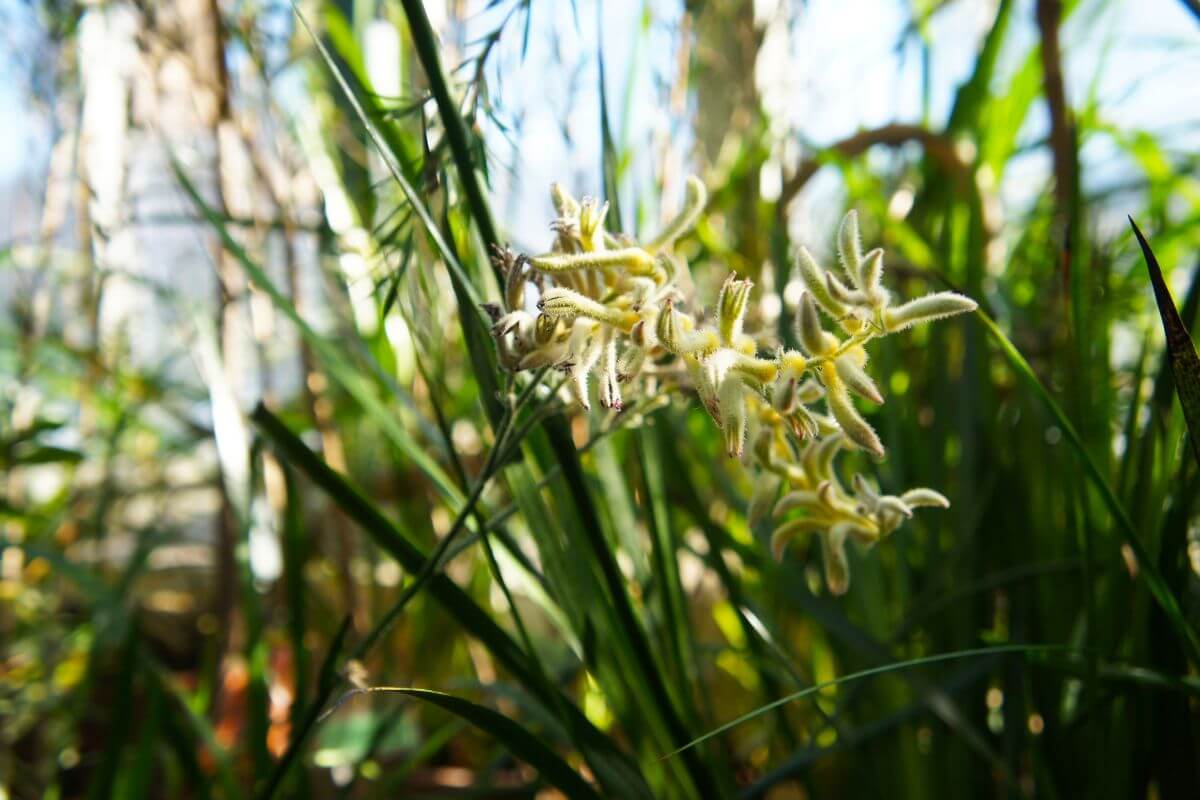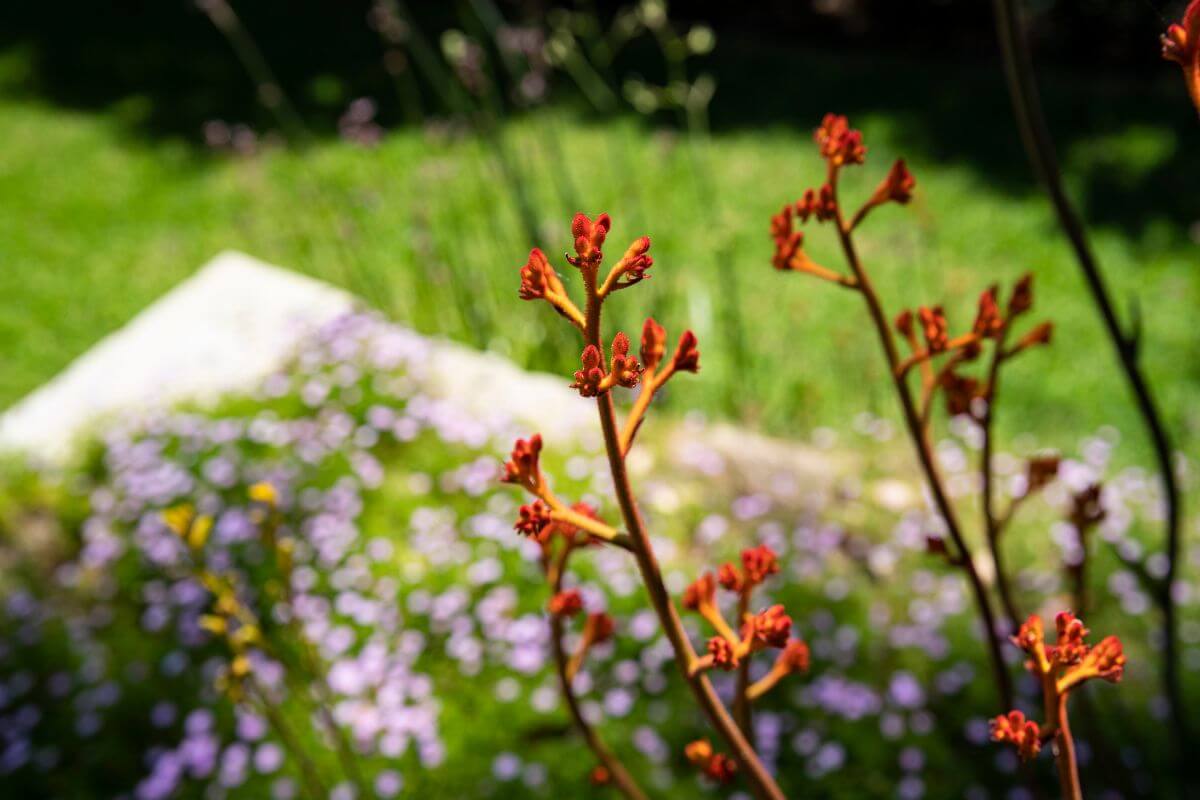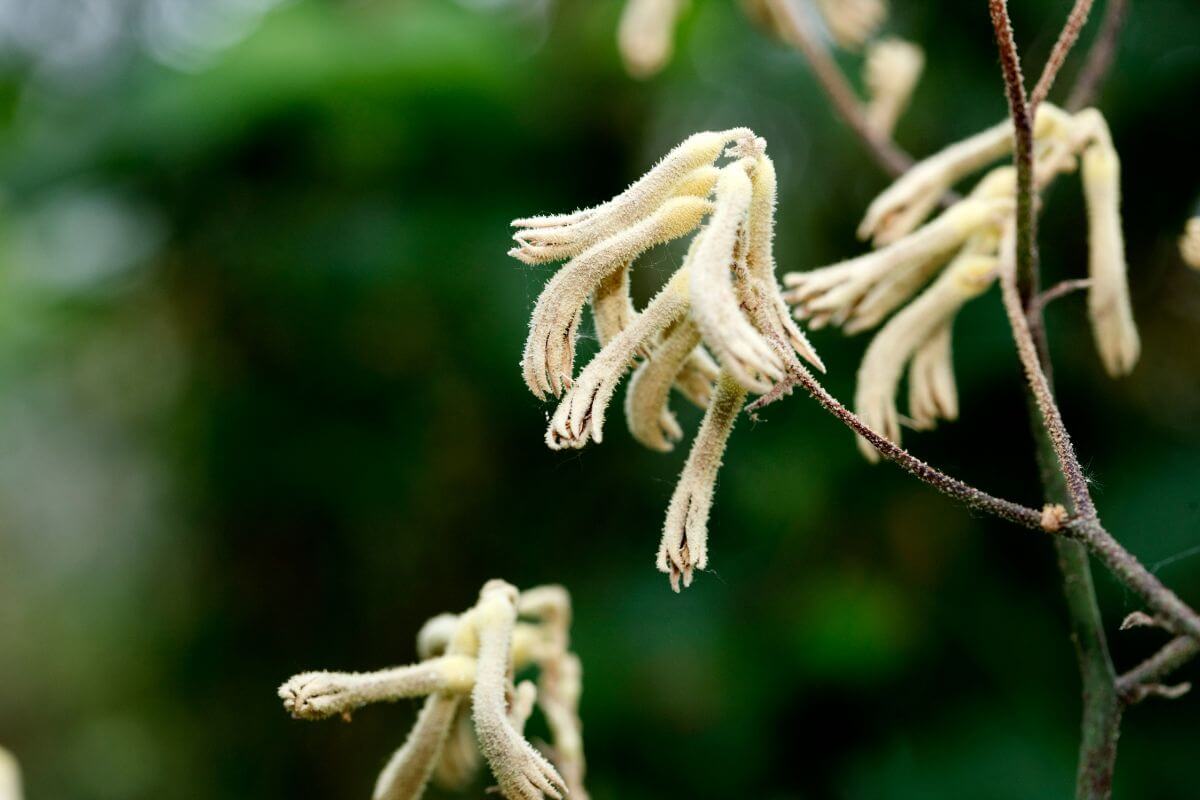Exotically shaped with brilliant colors, the beloved Australian Kangaroo Paw Plant, Anigozanthos flavidus, does indeed resemble a kangaroo’s paw, thus it’s popular name.
This plant is easy to grow in any well-drained soil with full sun exposure. It can be grown from seed or cuttings. They also make excellent houseplants for those who enjoy bright colors.
Learn how to care for the kangaroo paw plant and grow them into amazing flowers.
Kangaroo Paw Plant Overview

The kangaroo paw is a unique plant that grows naturally in Australia’s southwest with twelve various species. The Anigozanthos genus features eleven different species with one species belonging to the Macropidia.
The plant size, together with its stalks and colors, will depend largely on the individual specie, and are often the result of hybridization.
A stunning variety of this plant is the Macropidia fulginosa or Black Kangaroo Paw while the Anigozanthos manglesii is famous for its brilliant red blooms and is the flower emblem of Western Australia.
The lovely blooms of these plants are cultivated, sold and exported globally as cut flowers. Blooms are claw-like and clustered, opening from furry buds.
When grown indoors, this is a plant that will and can bloom at any time. Outdoors, the plant will bloom in the spring and summer months.
Fine hairs that surround it will affect the flower color. These hairs can be found in red, orange, yellow, and even black.
Pollination is achieved thanks to birds and bees that are attracted to the exceptionally long flower stalks with nectar. As the birds feed, they move from flower-to-flower pollinating.
The kangaroo paw can be either a tall or a compact plant ranging in height from two to over ten feet tall.
Kangaroo Paw Plant Care Guide
These perennial plants are not hard to take care of as long as you keep these care tips in mind.
Soil for the Kangaroo Paws Plant
The kangaroo paw plant will do fine in most types of soil, but prefers a slightly acidic soil bed that is well draining.
In its natural habitat, it’s often in sandy soil. The kangaroo paw does not require much in the way of nutrients.
It does not like sitting in wet soil. When using a standard potting mix, add some sand to ensure drainage of excess water.
Light for the Kangaroo Paw Plant

Light is crucial for this plant to grow and thrive. The kangaroo paws plant loves exposure to direct sunlight and will enjoy six full hours of sunlight daily.
They can survive with partial sun, but flowering will suffer.
Water for the Kangaroo Paw Plant
Relatively drought tolerant, the kangaroo paw plant does not require excessive watering or high humidity. Let the soil bed’s top few inches to dry out before watering.
They grow from rhizomatic roots that spread underneath the soil horizontally. These plants are susceptible to root rot when left in soggy soil.
If you are in a sub-tropical area, you can water the plants from the winter months through the blooming period. In cooler climates, there’s no need to water during its dormancy period.
Once they reawaken, water bi-weekly until flowering has finished.
Temperature for the Kangaroo Paw Plant
Temperatures in the range of 70° to 80° Fahrenheit are ideal. They can remain outdoors all year round as long as temperatures do not drop below freezing.
As a tropical plant, the kangaroo paw will need to be brought indoors during the winter if freezing is a risk and be kept relatively dry during dormancy.
To cultivate the Kangaroo plant outdoors, the climate should be in the USDA hardy zones 9 through 11.
Fertilizer for the Kangaroo Paw Plant
This plant is not a big feeder, but you can add a bit of compost or a slow-release fertilizer during its growing season annually. Compost can be applied when the kangaroo paw plant sprouts new shoots.
Pruning and Repotting the Kangaroo Paw Plant
Pruning will help the overall health of the kangaroo paw plant. It can be at risk for fungal disease, so trim back and remove any dying or dead flowers. Or once your flowers have faded, you can trim them together with the non-foliage.
Pruning will also encourage denser, bushier growth and may even stimulate a second blooming of your plant.
Once the bloom has faded, leaves will cease growing and no more flowers will be produced, so remove those leaves and only leave actively growing foliage on the plant. This will encourage future bloom production.
Once the first flower opens, cut off the stem top. You’ll have lovely flowers for a tabletop vase, and this will stimulate the plant to grow the buds found on the bottom half of the stem.
Propagating the Kangaroo Paw Plant

The kangaroo plant can be propagated with seeds during the springtime, but the quickest and easiest method is through division.
In the spring, the roots can be divided with a clean sterile knife and replanted in separate containers. Roots should be checked approximately every three years to see if they have become too rootbound. The more space you give the roots, the better it will grow.
To grow from seed, use starter trays filled with seeding mix. Plant the seeds and cover them, patting down soil and water generously.
Keep your seed trays moist, so that your seeds don’t dry out. Place them in a sunny spot. Once germination has taken place and the seedlings have grown to about four inches in height, they can be transplanted.
If you plant them outdoors in a garden bed, space the plantlets twelve to sixteen inches apart. Mulch lightly with organic mulch and water generously. Keep your mulch away from the plantlet’s base.
Kangaroo Paw Plant Pests, Diseases, and Problems

The kangaroo paw plant is relatively resistant to pests but is susceptible to spider mites when cultivated indoors.
To eliminate them, wash your plant by hosing or showering it with water. Afterward, treat the plant with neem oil or an insecticidal soap. Also, try to increase the humidity as spider mites enjoy and thrive in very warm, but dry conditions.
These plants are also not particularly at risk for a lot of diseases. However, Ink Spot disease is an exception. This disease will cause its green foliage and stems to turn black.
Should your kangaroo paw plant show signs of disease, trim away the diseased parts of the plant and place your plant in a spot with lots of sunlight and good air circulation. You may also want to change the soil, substituting it with fresh well-draining soil.
Kangaroo Paw Plant Pets and Toxicity
The kangaroo paw plant is not known to be poisonous to dogs or cats. Should they ingest some part of the plant they may just regurgitate it. Do call a vet or poison control if their symptoms worsen and linger.
Kangaroo Paw Plant Care Final Thoughts
This is a lovely, colorful plant providing lots of color when cultivated both indoors and out. It is an easy-care plant that asks very little of its owner.
Here are other great houseplants to take a look at growing:
Kangaroo Paw Plant Care FAQs
How do you take care of a kangaroo paw plant?
Taking care of the kangaroo paw plant is easy. by keeping it watered regularly and giving it plenty of direct sunlight. Most soil types will work, but it does enjoy well-draining, loamy soil the most.
Do kangaroo paws need full sun?
Kangaroo paws like full sun and bright light. They tolerate heat quite well, though they won’t appreciate temperatures above 80 degrees Fahrenheit. If you live somewhere where summers get hot, then this might mean moving your kangaroo paw indoors during the hottest times of day.
Are kangaroo paws easy to grow?
Yes, kangaroo paws are fairly easy to grow. The only thing you’ll really need to watch out for is overwatering. Make sure to keep your kangaroo paw’s soil consistently moist throughout the year and give it lots of sunlight.
How long do kangaroo paws live?
Kangaroo paws are perennial plants that can live up to 3 to 5 years. That said, many people have reported seeing these plants living much longer than that. They will bloom during the spring and summer when grown outdoors. When they are grown indoors, they can bloom year round.
Why do kangaroo paws lose their color?
Kangaroo paws can lose their color because they don’t receive enough light. As soon as you start exposing them to more light, they should regain their vibrant colors. They could also lose their colors if they are exposed to Ink Spot disease that changes the plant’s leaves black.
Do kangaroo paws grow in pots?
You can certainly use a pot to grow your kangaroo paw. Just make sure that you water your plant thoroughly every few days so that it doesn’t dry out too quickly. Also, try to clay pots as they are best for indoor cultivation.
Are kangaroo paw plants poisonous?
No, kangaroo paw plants aren’t toxic to pets or humans. However, if ingested, they can cause vomiting and diarrhea. Call your local veterinarian if your pet ingests any part of the plant and exhibits symptoms.


